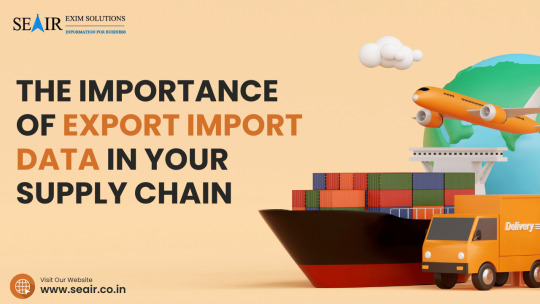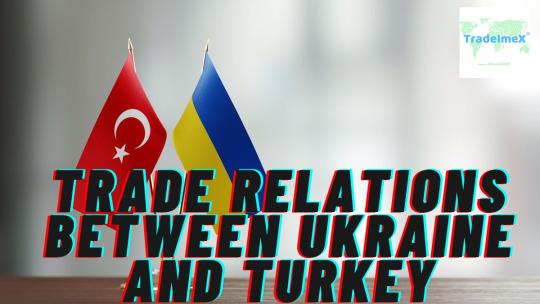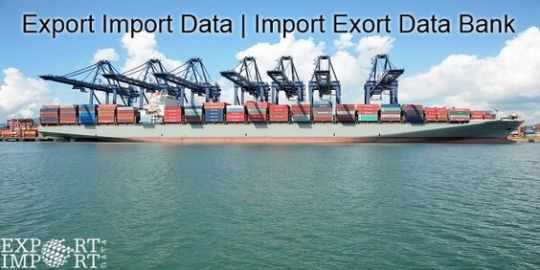#GlobalTradeData
Explore tagged Tumblr posts
Text
Embarking on Malaysia's import journey? Navigate the intricacies of the country's import landscape with confidence using our "10 Tips for Navigating Malaysia’s Importers List." From understanding regulatory nuances to leveraging online directories and attending trade shows, these insights are your key to forging successful trade relations. Whether you're a seasoned importer or a newcomer, these tips will empower you to make informed decisions and establish fruitful partnerships in Malaysia's dynamic market.
#export#trade data#export data#import#import data#marketresearch#internationaltrade#datadriven#globaltrade#globaltradedata#malaysia#export import data#Malaysia Importers List#Malaysia Export Data#Malaysia Import Data
2 notes
·
View notes
Text
Exporting Cotton Yarn from India in 2024–25 Full Guide for Traders

Want to Export Cotton Yarn from India in 2024–25? Learn about the latest trade data, HS codes, top destinations, export procedures, documentation, and the biggest exporters in the country.
More Info:-
#importtradedata#exportcottonyarnfromindia#cottonyarnhscode#cottoncode#globaltradedata#hscode#exportimportdata.in#tradedata
0 notes
Text
Which countries import the most leather from India?

As per recent India import export data, the country primarily exports footwear (40%), leather goods (25%), garments (20%), finished leather (10%), and saddlery (5%). Footwear components and designer handbags dominate global demand, driving significant export revenues.- https://vanesight.com/blog/indias-leather-export-boom-2025-top-markets-trends-trade-data/ Visit here for live search - https://dataverseeinc.com/
#GlobalImportExportDataProvider#IndiaLeatherExport#IndiaImportExportData#ImportExportData#ImportData#GlobalTradeData#IndiaExportData
0 notes
Text
Canadian Top 10 Exports: Key Products Driving Canada's Trade in 2025
Canada has a long history of dominating international trade, and its robust industrial sectors and abundance of natural resources make it a major player in the world market. Through industry specialization and innovation, Canada exports to expand its access to wider, more varied markets, generate income to cover export costs, and promote economic growth.
Read more: https://www.seair.co.in/blog/canadian-top-exports.aspx
0 notes
Text
Explore the dynamics of steel exports from India, discover the top steel exporters, learn about global rankings, and understand the latest data on steel export trends.
#steel exports from India#steel exporters in India#top 10 steel exporting countries#top exporters of steel#largest exporter of steel#steel export by country#exports of steel from India#steel#export#exportdata#exporter#globaltradedata
0 notes
Text
The Global Dynamics of Aluminium Scrap Imports: Insights, Trends, and Key Players
Aluminium scrap plays a crucial role in the production and recycling industries, providing significant environmental benefits by reducing the need for new raw materials and lowering carbon emissions. This article delves into the global dynamics of aluminium scrap imports, highlighting key trends, major players, and the economic and environmental impacts of this vital resource.

Aluminium Scrap Import Trends in India
In 2024, India imported 135,816 metric tonnes of aluminium scrap in April, showing a slight increase from the previous month’s 128,861 metric tonnes but a decrease from the 141,894 metric tonnes imported in April 2023. This trend underscores India’s position as a major player in the global aluminium scrap market.
In 2023, India was the world’s top importer of aluminium scrap, with 506,864 shipments. Over 3,453 Indian importers sourced aluminium scrap from 14,928 suppliers worldwide, reflecting a robust and growing market.
Global Aluminium Scrap Market
Several countries dominate the global aluminium scrap market. China, India, and the United States are among the top importers, with India surpassing other major economies in recent years. China, the second-largest importer, brought in $2,030.01 billion worth of aluminium scrap in 2021.
Economic and Environmental Impact
Recycling aluminium scrap is environmentally beneficial, significantly reducing CO2 emissions and conserving energy. For instance, recycling aluminium scrap produces only 0.3 million metric tonnes of CO2 per tonne, compared to 14 tonnes of CO2 per tonne produced through traditional methods. Economically, the demand for aluminium scrap is driven by strong market dynamics and price trends, with the Asia Pacific region being the largest producer and consumer.
Challenges and Opportunities
The aluminium scrap market faces several challenges, including import duties and regional conflicts that disrupt supply chains. However, there are opportunities for growth, such as policy changes proposed by industry associations like MRAI, which advocate for the removal of import duties to support sustainability.
Aluminium Scrap HSN Codes
Understanding the correct HSN codes is essential for importers. For aluminium scrap, the primary HSN codes are:
7602: Aluminium waste and scrap
760200: Detailed categories of aluminium waste and scrap
Industry Insights and Future Outlook
The global aluminium market is projected to grow, with an expected value of USD 255.91 billion by 2029. Industry experts suggest that advancements in recycling technology and supportive policies will drive this growth, especially in regions like Asia Pacific, North America, and Europe.
Resources for Importers
Importers can access real-time aluminium scrap import data through platforms like Eximpedia, which provide comprehensive databases and market reports. New importers are encouraged to utilize these resources to stay informed and competitive.
Conclusion
Aluminium scrap imports are vital to the global aluminium industry, contributing to economic growth and environmental sustainability. By staying informed about market trends, policy changes, and technological advancements, traders can navigate the challenges and seize opportunities in this dynamic market. For further information, platforms like Eximpedia offer valuable insights and data to help importers succeed.
#globaltradedata#eximpedia#Aluminium scrap imports#Aluminium Scrap Importer Data#aluminium scrap hsn code#op aluminium scrap importers
0 notes
Text
0 notes
Text
https://www.seair.co.in/blog/revolutionize-your-business-the-importance-of-export-import-data-in-your-supply-chain.aspx

To understand the importance of export-import data in your supply chain, explore this blog. You'll gain access to real-time global trade data and market trends.
0 notes
Text
Global Mushroom Trade 2023: Detailed Market Analysis and Growth Opportunities
This blog will discuss the detailed analysis of how Mushroom exports from India, including Mushroom export import data and highlighting the key trends and challenges for the Mushroom export and import market. Read more: https://www.exportimportdata.in/blogs/global-mushroom-trade.aspx
0 notes
Text
What are the trade relations between Ukraine and Turkey?
Overview of trade relations
Trade relations between countries play a crucial role in fostering economic development, encouraging international cooperation, and enhancing diplomatic ties. Ukraine and Turkey have a long history of bilateral trade, which has seen significant growth in recent years. Both countries have recognized the importance of strengthening their economic cooperation, leading to the establishment of fruitful trade relations. In this article, we will delve into the trade relations between Ukraine and Turkey, exploring their import and export data, and shedding light on the key aspects of their economic partnership.

Ukraine Import Data and key imports from Turkey.
Ukraine's imports from Turkey have been steadily increasing over the years. According to recent Ukraine import data, Ukraine imported a wide range of products from Turkey, including textiles, machinery, automotive parts, chemicals, and agricultural products. The trade volume between Ukraine and Turkey has shown a positive trend, providing ample opportunities for businesses in both countries to expand their market presence. Key imports from Turkey as per the Ukraine import data include:
Machinery and equipment: Ukraine relies on Turkish machinery and equipment for industries such as manufacturing, agriculture, and construction. These imports contribute to the development of Ukraine's infrastructure and industrial sectors.
Vehicles: Turkish automobiles, trucks, and buses are popular in Ukraine. The import of vehicles from Turkey helps meet the demand for transportation within the country and supports its automotive industry.
Chemicals: Ukraine imports a range of chemicals from Turkey, including fertilizers, pharmaceuticals, and polymers. These imports play a crucial role in various sectors, such as agriculture and healthcare.
Textiles and apparel: Turkish textiles and apparel products are well-known for their quality and affordability. Ukraine imports a significant amount of clothing, fabrics, and textile materials from Turkey to cater to its domestic market.
Ukraine Export Data and its exports to Turkey
Similarly, Ukraine has been exporting various goods to Turkey. The export data reveals that Ukraine primarily exports agricultural products, such as grains, oilseeds, and processed food items, to Turkey. Additionally, Ukraine's mineral fuels, metals, and chemical products also find their way into the Turkish market. Turkey has played a vital role in driving its export growth. Some of Ukraine's major exports to Turkey according to the Ukraine export data include:
Grain and agricultural products: Ukraine is known for its fertile land and agricultural productivity. It exports a substantial amount of grain, including wheat, barley, and corn, to Turkey. Additionally, other agricultural products such as sunflower oil and poultry are exported.
Iron and steel: Ukraine has a strong iron and steel industry, and Turkey is a major destination for Ukrainian exports in this sector. Steel products, including pipes, rods, and coils, are among the items exported to Turkey.
Mineral fuels: Ukraine exports a significant number of mineral fuels, such as coal and petroleum products, to Turkey. These exports play a vital role in meeting Turkey's energy demands.
Chemical products: The Ukrainian chemical industry exports various products such as fertilizers, pharmaceuticals, and dyes to Turkey. The chemical sector contributes to the diversification of exports and strengthens bilateral trade.
Boosting Economic Relations
The trade relations between Ukraine and Turkey have been further strengthened through various initiatives aimed at boosting economic cooperation. Both countries have engaged in bilateral meetings, trade exhibitions, and business forums to foster a favorable environment for trade and investment.
Free Trade Agreement
A milestone in Ukraine-Turkey trade relations was the signing of a free trade agreement in 2011. This agreement has facilitated enhanced market access for goods and services between the two countries, contributing to increased trade volumes. The elimination of tariff barriers and other trade restrictions has proven beneficial for businesses on both ends, promoting healthy competition and growth.
Investments and Joint Ventures
In addition to traditional trade relations, Ukraine and Turkey have also witnessed an upsurge in investments and joint ventures. Turkish companies have shown a keen interest in Ukraine's agriculture, energy, and manufacturing sectors. These investments have not only brought financial benefits to Ukraine but have also contributed to the transfer of expertise and technology, fostering mutual growth.
Future Prospects
The trade relations between Ukraine and Turkey hold immense potential for further growth and diversification. Both countries have identified key sectors for collaboration, such as infrastructure development, renewable energy, and information technology. Exploring these untapped opportunities will undoubtedly lead to the expansion of bilateral trade and strengthen the overall economic partnership.
Conclusion
Ukraine and Turkey have successfully nurtured a robust trade relationship, driven by mutual interests and collaborative efforts. The import and export data between the two countries underscore the diverse range of goods exchanged, reflecting the multifaceted nature of their economic ties. With continued efforts to foster cooperation, eliminate trade barriers, and explore untapped sectors, Ukraine and Turkey are poised to achieve even greater economic success in the future.
0 notes
Text
Ethiopia, with a vibrant economy and strategic location, is a promising global trade hub. Importing goods offers lucrative prospects, but understanding associated costs is crucial. This article on "How much does it cost to import something into Ethiopia?" explores factors impacting import costs and introduces valuable resources like Ethiopia Export Data, Ethiopia Import Data, and the Ethiopia Importers List.
#export#import#trade#tradedata#datadriven#marketresearch#exportdata#importdata#ethiopia#globaltrade#globaltradedata#ethiopiaImportData#ethiopiaImportersList#ethiopiaExportData#internationaltrade
0 notes
Text
India’s Mango Export Market: Trends, Challenges & Opportunities
Explore India’s booming mango export industry, key varieties like Alphonso and Kesar, and top importing countries. Learn about challenges such as logistics and compliance, and how global import export data provider can help businesses expand globally.

#globalimportexportdataprovider#IndiaImportExportData#importexportdata#ImportData#GlobalTradeData#IndiaMangoExportData
0 notes
Text
Comprehensive Overview of Import and Export Data for Russia, Indonesia, Bangladesh, Liberia, and Uganda
Global trade is a complex and dynamic field, crucial to the economic health of nations. Import and export data provide valuable insights into market trends, economic health, and trade relationships. This article delves into the import and export data for Russia, Indonesia, Bangladesh, Liberia, and Uganda, along with an overview of key suppliers in these countries.

Russia Import Data and Suppliers
Russia Import Data
Russia import data diverse, encompassing machinery, pharmaceuticals, vehicles, and agricultural products. Key import partners include China, Germany, the United States, and Italy. The import data reveals a focus on high-value goods that support Russia's industrial and consumer sectors.
Russia Suppliers Data
Russia sources its imports from a range of international suppliers. Major suppliers Russia include:
China: Electronics, machinery, textiles.
Germany: Automotive parts, industrial machinery.
United States: Aerospace products, pharmaceuticals.
Italy: Fashion, luxury goods.
Indonesia Import Data and Suppliers
Indonesia Import Data
Indonesia, a rapidly growing economy, imports goods essential for its industrial base and consumer market. Key imports include machinery, chemicals, fuels, and foodstuffs. Major import partners are China, Japan, Singapore, and South Korea.
Indonesia Suppliers Data
Indonesia's primary suppliers are:
China: Electronics, machinery, textiles.
Japan: Automotive parts, electronics.
Singapore: Refined petroleum, chemicals.
South Korea: Electronics, steel products.
Bangladesh Import Data
Bangladesh, a developing nation with a burgeoning manufacturing sector, imports machinery, chemicals, food products, and raw materials for its textile industry. The Bangladesh main import partners are China, India, Singapore, and Japan. This import data highlights Bangladesh's reliance on these countries for industrial and consumer needs.
Liberia Import and Export Data
Liberia Import Data
Liberia's imports primarily include machinery, vehicles, fuel, and food products. Key import partners are China, India, South Korea, and the United States. The import data reflects the country's dependence on foreign goods for both industrial and everyday consumer needs.
Liberia Export Data
Liberia's exports are predominantly natural resources, including iron ore, rubber, timber, and gold. Liberia Major export destinations are the United States, China, Germany, and France. The export data underscores Liberia's role as a supplier of raw materials on the global stage.
Uganda Import Data and Suppliers
Uganda Import Data
Uganda imports a range of goods, including machinery, vehicles, petroleum products, and pharmaceuticals. Primary import partners are Kenya, China, India, and the United Arab Emirates. This data reveals Uganda's need for industrial goods and consumer products.
Uganda Suppliers Data
Key suppliers to Uganda include:
Kenya: Agricultural products, processed foods.
China: Machinery, electronics.
India: Pharmaceuticals, textiles.
United Arab Emirates: Petroleum products, machinery.
Conclusion
Understanding the import and export dynamics of these nations provides crucial insights into their economic landscapes and trade relationships. Russia and Indonesia focus heavily on industrial and consumer goods, while Bangladesh and Liberia rely on imports for manufacturing and exports of natural resources. Uganda's import data highlights its growing industrial needs and consumer market. Analyzing suppliers data from key countries further underscores the interconnectedness of global trade.
By studying this data, businesses, policymakers, and researchers can make informed decisions and strategies to navigate the complexities of international trade data.
0 notes
Text
Discover everything about chilli export from India, including top chilli exporters, red chilli export data, major exporting countries, and strategies to thrive in the global spice market.
#chilli export from India#chilli exporters in India#Indian chilli exporters#red chilli export from India#red chilli exporters in India#chilli exporting countries#export of chilli from India#chilli#exportdata#exporter#chilliexport#globaltradedata#globaltrade
0 notes
Text
Top 10 Imports of Russia: A Comprehensive Guide
Russia, a country renowned for its vast natural resources and industrial equipment manufacturing, stands as the 8th largest economy in the world. With a strong reliance on both domestic manufacturing and international trade, import of Russia goods worth US$ 303.8 billion in 2023-24, marking a 10% increase from the previous year. This significant import volume positions Russia as the 30th largest importer globally.

In this blog, we will delve into the top imports of Russia, key trade partners, and the import relationship between Russia and India, providing a comprehensive overview based on the latest trade data.
Overview of Russia's Imports: 2023-24
Total Import Value: US$ 303.8 billion (10% increase from last year)
Total Shipments: 124.1k
Number of Importers: 14,665 global importers
Number of Suppliers: 10,650 Russian suppliers
Top 10 Imports of Russia
Machinery, Nuclear Reactors, Boilers
Import Value: US$ 54.56 billion
Share of Total Imports: 28.58%
Top Import Destinations: Guatemala, Kazakhstan, Spain, United Kingdom, Germany
Shipments: 190.6k
Electric and Electronic Equipment
Import Value: US$ 36.95 billion
Share of Total Imports: 19.38%
Top Import Destinations: United States, Vietnam, Uzbekistan
Shipments: 202.1k
Vehicles
Import Value: US$ 26.85 billion
Share of Total Imports: 14.09%
Top Import Destinations: India, Uzbekistan, United States
Shipments: 883.2k
Pharmaceutical Products
Import Value: US$ 13.85 billion
Share of Total Imports: 7.25%
Top Import Destinations: Germany, Switzerland, Belgium, Netherlands, Slovenia
Shipments: 182k
Plastic and Plastic Articles
Import Value: US$ 12.75 billion
Share of Total Imports: 6.65%
Top Import Destinations: Vietnam, China, Japan, Taiwan, Singapore
Shipments: 94.8 million
Optical, Photo, Technical, and Medical Apparatus
Import Value: US$ 8.79 billion
Share of Total Imports: 4.57%
Top Import Destinations: Uzbekistan, United States, India, Belgium
Shipments: 181.7k
Articles of Iron or Steel
Import Value: US$ 6.59 billion
Share of Total Imports: 3.39%
Top Import Destinations: India, Vietnam, China
Shipments: 85.1 million
Iron and Steel
Import Value: US$ 5.93 billion
Share of Total Imports: 3.12%
Top Import Destinations: India, China, Germany, Mexico, Japan
Shipments: 24.1 million
Organic Chemicals
Import Value: US$ 5.85 billion
Share of Total Imports: 3.08%
Top Import Destinations: Germany, India, Netherlands, Belgium, Italy
Shipments: 4.3k
Fruits and Nuts
Import Value: US$ 5.44 billion
Share of Total Imports: 2.86%
Top Import Destinations: Germany, Poland, Switzerland
Shipments: 31.3k
Major Import Partners of Russia
China
Import Value: US$ 76.92 billion
Germany
Import Value: US$ 28.35 billion
United States
Import Value: US$ 19.26 billion
Belarus
Import Value: US$ 18.54 billion
Korea
Import Value: US$ 15.22 billion
France
Import Value: US$ 13.33 billion
Italy
Import Value: US$ 12.67 billion
Japan
Import Value: US$ 10.60 billion
Kazakhstan
Import Value: US$ 8.42 billion
Turkey
Import Value: US$ 7.59 billion
Russia's Imports from India: 2023-24
Total Import Value: US$ 2.5 billion
Total Shipments: 6.2k
Number of Importers: 625 Russian importers
Number of Exporters: 382 Indian exporters
Major Imports: Packaged medicaments, crustaceans, large flat-rolled stainless steel
Growth Rate: 19.2% increase over the past seven years
Conclusion
Russia's import landscape is diverse, encompassing everything from machinery and electronic equipment to pharmaceutical products and organic chemicals. The country's reliance on international trade is evident from its extensive list of import partners and the significant volume of imports. As Russia continues to innovate and develop, its import needs will remain crucial to sustaining its economic growth and meeting domestic demands.
For exporters looking to tap into the Russian market, understanding the main imports and key trade partners is essential. Eximpedia.app offers comprehensive data and insights to help you navigate the complexities of international trade with Russia.
#globaltradedata#importofRussia#topimportsofRussia#relationshipbetweenRussiaandIndia#eximpedia#Russia'simport
0 notes
Text

Reliable Indian Trade Data online
#indian trader#exporters#globaltradedata#importexportdata#importers#export#global#importexport#trade data#export data#import export
5 notes
·
View notes